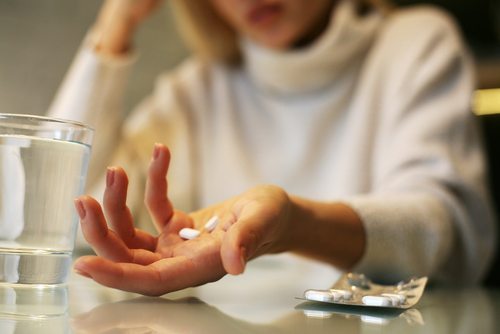American society is too dependent on pharmaceuticals. And with millions, this dependence transcends therapeutic use and turns into abuse. It is important that individuals gain awareness of how prescription painkillers are potentially harmful.
Early intervention is often the best way to help a loved one seek treatment and increase chances for a successful, long lasting recovery. Physical and emotional damage is also minimized when addiction is caught early on. Learn how to identify the signs of prescription drug use and what to do if a loved one is suspected of being addicted.
Spotting the Warning Signs
A prescription drug addiction can be hidden in plain sight. If you’re concerned that a loved one is struggling with prescription drug problem, there are a series of warning signs that can help you know when it’s time to seek help.
The most common warning signs of a prescription drug addiction include:
- They won’t talk about their drug use and get upset when you bring it up
- They frequently lose or misplace prescriptions and get them refilled
- They sometimes visit the hospital unnecessarily to get more drugs
- They struggle to complete their daily routines
- They can get upset or irritable unexpectedly
- They take more of a prescribed drug than is necessary for their ailment
- Visiting several different doctors to obtain prescriptions (doctor shopping)
- Spending more time isolated, away from family
- Excessive spending with no explanation
- Missing career or family functions
- Addicts spend a lot of time in trying to obtain the drug, they lose interest in activities and prefer to stay aloof. Aloofness serves to keep them away from friends and family who may recognize the symptoms of their condition and try to put an end to it.
- A demotivated addict does not bother about hygiene, cleanliness, and following a routine.
Are Prescription Painkillers Really Addictive?
 Many prescription painkillers are opioids, which are a highly addictive class of drugs. Examples include hydrocodone and oxycodone. Painkillers are safe only when taken in doses prescribed by doctors and for the duration allowed. Even in these cases, subjects can develop a tolerance to the painkiller and may increase the dose without informing the doctor. This leads to physical dependence that can soon become an addiction.
Many prescription painkillers are opioids, which are a highly addictive class of drugs. Examples include hydrocodone and oxycodone. Painkillers are safe only when taken in doses prescribed by doctors and for the duration allowed. Even in these cases, subjects can develop a tolerance to the painkiller and may increase the dose without informing the doctor. This leads to physical dependence that can soon become an addiction.
If proper diligence is not exercised, one has to suffer uncomfortable withdrawal symptoms after the medication is stopped. Withdrawal symptoms associated with Lortab (hydrocodone and acetaminophen) include aches, perspiration, severe vomiting, and headaches. Symptoms can develop in as few as 24 hours.
When Addiction Takes Hold
Endorphins are our body’s natural pain relievers. The pituitary gland secretes this chemical, which binds to the receptors in the brain and helps alleviate pain. This natural provision to counter pain needs a medical boost when the pain is too severe. Opioid-based prescription medications improve the binding of the endorphins to the brain’s receptors. This leads to quicker relief. However, continuous use of such medicine alters brain chemistry and leads to physical dependence.
If you’ve been asked to stop taking medication, but continue to do so, then you are likely an addict, or at the very least you have become physically dependent on the drug. Receptors in your brain need the endorphin release stimulated by the drug at all times. As the dosage and frequency of drug intake increases, the number of receptors in the brain increases. This necessitates an increase in the dose or more frequent doses. This is how addiction tightens its grip on an individual.
When an addict’s brain is deprived of opiates, withdrawal happens. The best way to overcome withdrawal and beat addiction is under the guidance of experienced recovery experts, preferably in a rehab center where trained personnel can ensure that you navigate the different stages of withdrawal with minimum discomfort. Once, the detox happens and withdrawal is no longer an issue, recovery from addiction becomes relatively easier. However, you always need to be on guard against relapse.
Seeking Help and Finding Support
A doctor will be best equipped to determine whether a patient is suffering from a prescription drug addiction, and can also analyze the drugs being taken to determine their addictiveness.
The most difficult part of the journey towards recovery is helping your loved one realize that they have a problem. While family interventions or counseling can sometimes be effective in convincing the person that they need help, a trained addiction professional may be better equipped to get the person enrolled in treatment.
When entering treatment, a qualified addiction expert should perform a comprehensive assessment of the person’s addiction and recovery needs and goals. This assessment will help define their treatment going forward, including customized recovery programs and treatment.
The good news is that people do not have to seek treatment and journey alone through the process. Support can come from family, friends, loved ones and professional staff who care about the person’s well-being and overall health. Groups are a great way to find others who understand the experience of using prescription drugs with individuals who have been in recovery a long time and will offer advice, support and counsel when needed. With support, treatment and a positive attitude, it is possible to quit using prescription drugs for good.
The Villa provides individualized assessments, programs and treatment for individuals struggling with prescription drug use. Don’t suffer in silence. We are here to help you or your loved one. Call us for more information on how to get started.

